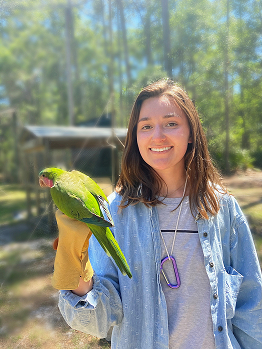Familiarity with social partners influences affiliative interactions but not spatial associations
Published:
To successfully navigate complex social environments, animals must manage their relationships with familiar group members and strangers introduced via fission-fusion or demographic processes by deciding who, how often, and when to interact. However, it is not clear how animals balance the risks and benefits of interacting with familiar and stranger conspecifics. We studied whether familiarity among group members affect the patterning and timing of spatial associations and affiliative interactions in a captive group of 22 monk parakeets (Myiopsitta monachus) captured from four geographically distinct sites. We tested whether familiar and stranger dyads differed in the presence, strength, and timing of spatial and affiliative relationships. We found that general patterns of spatial proximity between birds were unaffected by capture site. In contrast, all affiliative interactions, like allopreening and beak touching, occurred significantly more often among familiar birds compared to stranger dyads. These affiliative interaction networks were also more densely connected, but relationships were not always stronger among familiar birds compared to strangers. Familiar and stranger birds did not differ in the timing of initiation of spatial proximity, while most affiliative interactions among strangers occurred significantly later in the experiment compared to familiar birds. In contrast, we found that the familiar and stranger spatial networks were equally well-connected, but associations were stronger among familiar birds. Our results show that monk parakeets discriminate between familiar and unfamiliar birds and suggest that birds use their previous experiences to make affiliative social decisions. By investigating the effect of familiarity on spatial and affiliative interactions we gain a better understanding of how individuals manage the costs and benefits of interacting with unfamiliar individuals.
